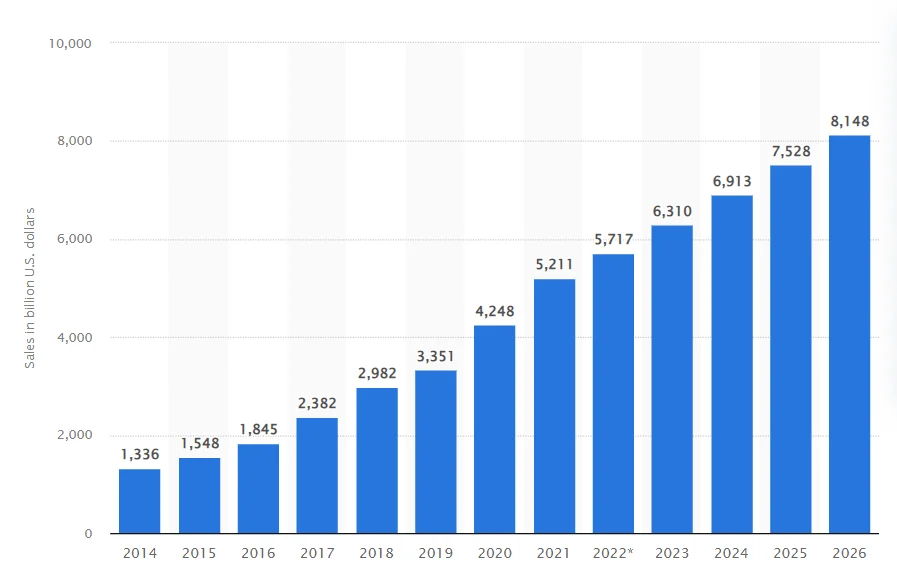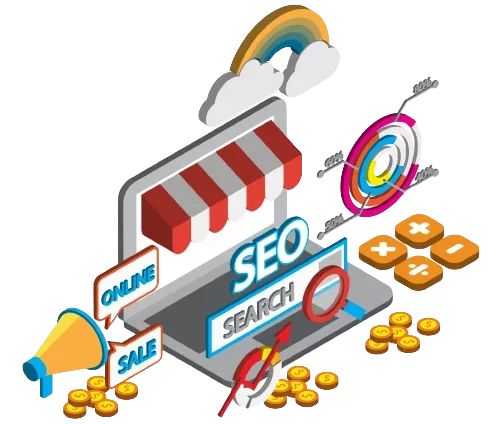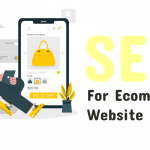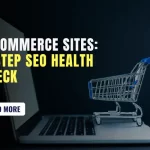Ultimate SEO Ranking Factors for E-commerce website
Recently updated: May 29th, 2024
Do you have an online store that doesn’t generate enough sales? You might be wondering if it was the right decision to launch an online store in the first place. Well, it was definitely right. Did you know the total value of e-commerce sales increased from $1.3 trillion in 2014 to 5.7 trillion in 2022? According to Statista, retail e-commerce sales will be worth $8 trillion by 2026.

Source: Statista
The main reason why you are not making enough sales is because your online store is not visible or discoverable online by people looking for products like yours. The ranking of your online store matters a great deal.
According to FirstPageSage, two-thirds of all clicks on Google Search are received by the top 3 organic search results. And the first organic search result receives 19 times more clicks than the top paid search result.
So, if your website is ranking at the bottom of the first page or on the second, third, or fourth search engine results page, it won’t attract potential customers.
But what affects the ranking of your e-commerce store? How to rank your e-commerce website on page #1 of Google and other search engines?
If you want to grow your customer base strongly, first you need to understand what e-commerce SEO is and its ranking factors.
What is E-Commerce SEO?
E-commerce SEO (Search Engine Optimization) refers to the practice of optimizing an e-commerce website and an online store to improve its visibility in search engine result pages (SERPs). The main aim of e-commerce SEO is to generate organic traffic for a website and drive more sales.
This practice is more cost-effective and easy to reach a huge audience rather than bidding on expensive paid ads keywords. E-commerce SEO becomes an important strategy to rank higher on the search engines. You can achieve that by making a well-optimized website that has high-quality content.
However, SEO for an e-commerce website is more than just adding targeted keywords and building links. You have to keep a good knowledge of search engine algorithms and how search engines are implementing those algorithms.
Why Is E-Commerce SEO Important?
E-commerce SEO is important for the growth of online businesses. To attain a high position in the market, you need to attract the right target audience, establish a strong online presence, and generate organic traffic.
Some reasons that justify the importance of e-commerce SEO:
- E-commerce SEO increases the visibility of web pages of online businesses. A well-maintained and well-optimized website is shown higher in search engine result pages when a customer searches for any product or service you offer.
- If your website is higher in search engine rankings, then it leads to increased organic traffic to your site. Organic traffic is valuable because it is more cost-effective.
- E-commerce SEO allows you to target specific keywords that are relevant to your product and service. This will increase your conversions and help your customers reach out to the products that they want.
- SEO will optimize your website, content, design, and other major aspects. This will enhance the overall user experience and it will be easy for customers to navigate your website.
- Websites with higher rankings in search engine result pages will become trustworthy and authoritative among others. It will build trust relations with your customers.
SEO Ranking Factors for E-Commerce Website
Here are some factors responsible for the ranking of e-commerce websites. If you want to optimize your e-commerce website and increase the search rankings, then you can also focus on the below-given factors.
1. Keyword Selection
Keywords are the backbone of SEO that will strengthen the base of your e-commerce website. If you have an online store, the first thing you need to do is find relevant keywords for your website. Second, understand the buyer’s intent behind keywords and select your keywords according to that.
Keyword intent is the aim behind a search query. You can identify it by searching for a specific phrase that people use when they are looking for a product online. Keyword intent is also known as user intent or search intent.
There are mainly 2 types of Keyword Intent:
- Informational keyword intent is used when a buyer wants to search for an answer to a question or to understand a topic in more detail.
For example: If you have a store for headphones, an informational keyword might be “Best brands for headphones.”
Users may not be looking to purchase a product yet, but they wanted to get an answer to the query that is related to your product.
- Commercial keyword intent is used when the user wants to make a purchase and wants information related to that product.
For example, Review-based queries are examples of commercial intent keywords, like “Which are the best headphones?”
Customers use commercial intent keywords, when they know what to buy but don’t know from where.
2. Secured Website and Site Architecture
If you own an online store, then you should have a secure website and a good site structure. That means optimizing your website category and product pages which mainly generate traffic and sales.
Secure your website with HTTPS in your URLs and upgrade the site structure, which can improve your website ranking. Securing a website and site structure is part of technical SEO. These two are the main ranking factors for your e-commerce website.
Technical SEO is the smart strategy of optimizing your website technically for search engine result pages. It helps search engines find out about your website without any complications. Technical SEO is mainly for designing your website structure and securing it but also includes other aspects
You can secure your website and build an optimized site structure step-by-step to improve website rankings:
- Conduct an SEO audit to identify opportunities for improvement and fix technical issues. Use specialized auditing tools to make your technical base strong.
- Make a balanced website structure with proper alignments that will be easy to navigate. People should easily find what they want to find with just a few clicks. By this, search engines can also easily follow the internal links from page to page and give the result within a minute. This shows how well your website is linked and organized.
- Search engines usually show secured websites with HTTPS. You should have maintained your URLs in order and in short or confined form. Use target keywords and separate words by using hyphens.
Generally, an e-commerce website has many pages and all these pages bring changes to the website that may cause technical SEO issues.
For example: If you have a website that is almost the same as your competitor’s website, an optimized technical SEO can make a difference between rank1 and rank2.
Here are some technical SEO issues that need to be fixed:
- Huge number of unorganized pages
- Slow website speed
- Copied content
3. Unique and Relevant Content
Having original and unique content is one of the crucial ranking factors for e-commerce websites. This factor can drive more organic traffic and conversions. For this, you need to understand in-depth strategies for writing your content in the correct format to achieve high rankings in search engine result pages.
Here are some steps you need to understand before going for creating content:
- Start using commercial intent keywords and find which products your potential customers are mostly up for. According to a study by Oberlo, 96% of marketing decision-makers say that content marketing has been effective for their brands.
- Keep a good understanding of keywords and phrases that your customers often use while searching for any product. Keep track of important keywords and use them wisely while optimizing your website.
- Make product lead content that should be original and fact-checked. Original and unique content will grab the user’s attention in a short time. This will drive more sales and organic traffic.
4. Title Tags, Meta Descriptions, and URLs
After the secured website and original content, the next ranking factors for e-commerce SEO are proper title tags, meta descriptions, and URLs. These factors come under on-page SEO.
By including these elements in your e-commerce website, you can boost your website’s visibility and attain a high position in search engines.
- A fully optimized e-commerce website must have perfect title tags, Meta description tags, and at least 1000 plus content on the product and category page using keywords at least 3-4 times.
- Always use short and unique URLs, which will also help search engines to find the most relevant page.
- Unique descriptions will also drive search engines to understand and select your website. Make sure to keep it descriptive and helpful and do mention long-tail keywords for better-increasing visibility.
5. Backlinks
Backlinks are also an important ranking factor in e-commerce SEO. Quality links tell Google and other search engines that your site has credibility.
Using diverse strategies for building quality links in your e-commerce sites will be helpful. Here are two ways you can follow to attain a good rank and acquire backlinks.
- Try to find expired and outdated resources and create a list of those pages. Then send emails to website owners and build links through this process.
- Find out about some social media groups and see their events inside the groups. Search for an event that might need your product or service. Try to connect with the event managers or with people who are hosting that event.
- Send your products with proper requirements and stay connected with the event organizers. Send the thank you letters and ask to work together in upcoming events.
- Use the product feedback technique that can help you to get featured on the list of the best products in that category. Find out some best products, make a list, and offer them your products in return for feedback. If they like your product, ask them to include your product in their list. This is a direct way to build links for product pages.
6. Page Speed
The speed of the page is one of the essential ranking factors for e-commerce SEO. People do not want to wait long while a site loads. According to the study, 19% of customers will leave a page that takes longer than two to three seconds to load.
Online customers said that their ideal website speed is just two seconds, faster will be better. You can check your website’s current speed from many free tools which are available online.
There may be some reason why your website speed is slow.
Your site may have too much unwanted content, making it difficult for the server to load it quickly. If your website has too many images, it will also be a reason for slowing down your website’s speed.
You can follow these steps if you want to avoid reasons for slowing your website speed:
- Use a few images with normal resolutions
- Use compressed files
- Limited use of redirects
- Fastening your server response time
- Use white space wisely
7. User Experience
This is very crucial for e-commerce websites to have user-friendly interfaces. You can enhance your user experience with creative designs, good site structure, and by making visuals more appealing to the customers.
It is not only about making your website look good but it should be working properly. User experience incorporates everything from navigation, easy use, and overview of the website. User experience is also about making sure that people can find their desirable products easily and giving customers the best experience possible.
Several things can enhance user experience:
- Shorten your site load time
- Improve your site’s interactive
- Make sure that too many ads do not interfere with the user experience
- Build your website with clear CTAs (calls to action)
8. Optimized Category and Product Pages
Category pages are an important ranking factor for e-commerce websites. This works by dividing an e-commerce store into subcategories so online customers can easily navigate to specific products.
Optimizing category pages can attract many customers from search engine result pages to the website. This helps customers to navigate the virtual store easily.
In terms of page design, category pages tend to have a highly structured interface.
Sub-category pages will show the products you are selling under the category that your website has.
For example: if you have an online store for Laptops, their subcategories are “Touch screen laptops” and “360-degree laptops.”
Conclusion
E-commerce SEO is important for the success of people who have an online store. It helps them to compete effectively in the marketplace digitally. Always remember that SEO is an ongoing process and it is important to enhance your website according to the search engine’s algorithms. Continually analyzing competitor’s website performance and then making changes based on data received. This includes content updation, keyword rankings, and tracking the changes.
By improving search engine visibility, e-commerce businesses can attract more organic traffic, reach their target audience, and ultimately increase sales and revenue. Track your website performance regularly and stay updated with the trending scenario of the marketplace.
I hope that this article gives you deep insight into e-commerce SEO and its ranking factors.
Latest posts by Vijaya Tyagi (see all)
How To Track Shopify SEO Performance & Metrics (2025) - January 14, 2025
Link Building Strategies: The Ultimate Techniques for 2025 - December 31, 2024







